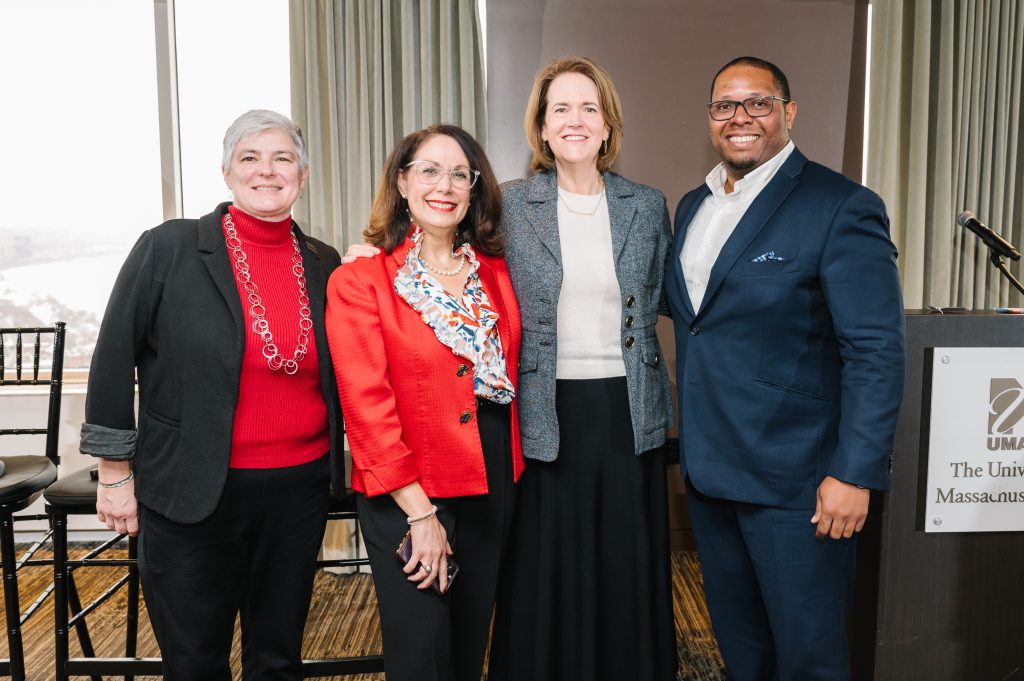From Theory to Action
What makes a neighborhood thrive? It’s not just about ample housing for a variety of socioeconomic levels. What are the other essential elements that support families in living healthy and successful lives?
This February, Urban Edge partnered with MassINC to explore these questions at, “School Centered Neighborhood Development: From Theory to Action” a lively event that explored how schools and neighborhood partners can work together to advance holistic community development.
A distinguished panel included Carol Naughton, CEO of the Atlanta-based nonprofit Purpose Built Communities; Kristin McSwain, Director of the Office of Early Childhood for the City of Boston; Vanessa Calderón-Rosado, CEO of Inquilinos Boricuas en Acción; with Rob Watson, director of EdRedesign at the Harvard Graduate School of Education serving as moderator. The conversation featured thought-provoking strategies for how schools can support neighborhood development and how neighborhoods can lift up schools in a way that improves outcomes for students, families, and residents of the entire community.
Key Takeaways:
Schools as community anchors: Schools are not just educational institutions—they are central to neighborhood identity, stability, and opportunity. Investing in school-centered neighborhood development means creating environments where students and families have access to quality housing, safe public spaces, and economic opportunity. Carol Naughton highlighted successful models where schools have driven neighborhood revitalization, emphasizing the importance of community-driven planning for long-term change.
Cross-sector collaboration is key: Sustainable, school-centered neighborhood development requires intentional partnerships across education, housing, community development, and local government. Kristin McSwain discussed how multi-sector coordination can maximize resources and break down systemic barriers. The panel underscored the importance of shared goals and sustained investment from both public and private entities. Carol Naughton underscored the critical role played by a local community quarterback organization that helps coordinate multiple efforts across different organizations and institutions.
Lessons from successful initiatives: Vanessa Calderón-Rosado shared insights from local efforts that demonstrate how integrating school improvements with community investments can create lasting change. From expanding wraparound services to developing mixed-income housing near schools, these initiatives show the power of aligning resources to support families holistically. Panelists also discussed challenges, such as navigating multiple funding streams and ensuring community voices lead decision-making processes.

